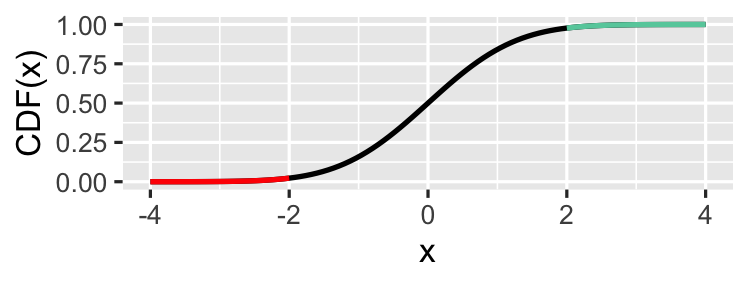One-sample proportion tests
Hypothesis Testing in Python

James Chapman
Curriculum Manager, DataCamp
Chapter 1 recap
- Is a claim about an unknown population proportion feasible?
- Standard error of sample statistic from bootstrap distribution
- Compute a standardized test statistic
- Calculate a p-value
- Decide which hypothesis made most sense
- Now, calculate the test statistic without using the bootstrap distribution
Standardized test statistic for proportions
$p$: population proportion (unknown population parameter)
$\hat{p}$: sample proportion (sample statistic)
$p_{0}$: hypothesized population proportion
$$ z = \frac{\hat{p} - \text{mean}(\hat{p})}{\text{SE}(\hat{p})} = \frac{\hat{p} - p}{\text{SE}(\hat{p})} $$
Assuming $H_{0}$ is true, $p = p_{0}$, so
$$ z = \dfrac{\hat{p} - p_{0}}{\text{SE}(\hat{p})} $$
Simplifying the standard error calculations
$SE_{\hat{p}} = \sqrt{\dfrac{p_{0}*(1-p_{0})}{n}}$ $\rightarrow$ Under $H_0$, $SE_{\hat{p}}$ depends on hypothesized $p_0$ and sample size $n$
Assuming $H_{0}$ is true,
$z = \dfrac{\hat{p} - p_{0}}{\sqrt{\dfrac{p_{0}*(1-p_{0})}{n}}}$
- Only uses sample information ($\hat{p}$ and $n$) and the hypothesized parameter ($p_{0}$)
Why z instead of t?
$t = \dfrac{(\bar{x}_{\text{child}} - \bar{x}_{\text{adult}})}{\sqrt{\dfrac{s_{\text{child}}^2}{n_{\text{child}}} + \dfrac{s_{\text{adult}}^2}{n_{\text{adult}}}}}$
- $s$ is calculated from $\bar{x}$
- $\bar{x}$ estimates the population mean
- $s$ estimates the population standard deviation
- $\uparrow$ uncertainty in our estimate of the parameter
- t-distribution - fatter tails than a normal distribution
- $\hat{p}$ only appears in the numerator, so z-scores are fine
Stack Overflow age categories
$H_{0}$: Proportion of Stack Overflow users under thirty $=0.5$
$H_{A}$: Proportion of Stack Overflow users under thirty $\neq0.5$
alpha = 0.01
stack_overflow['age_cat'].value_counts(normalize=True)
Under 30 0.535604
At least 30 0.464396
Name: age_cat, dtype: float64
Variables for z
p_hat = (stack_overflow['age_cat'] == 'Under 30').mean()
0.5356037151702786
p_0 = 0.50
n = len(stack_overflow)
2261
Calculating the z-score
$z = \dfrac{\hat{p} - p_{0}}{\sqrt{\dfrac{p_{0}*(1-p_{0})}{n}}}$
import numpy as np
numerator = p_hat - p_0
denominator = np.sqrt(p_0 * (1 - p_0) / n)
z_score = numerator / denominator
3.385911440783663
Calculating the p-value
 Left-tailed ("less than"):
Left-tailed ("less than"):
from scipy.stats import norm
p_value = norm.cdf(z_score)
Right-tailed ("greater than"):
p_value = 1 - norm.cdf(z_score)
Two-tailed ("not equal"):
p_value = norm.cdf(-z_score) +
1 - norm.cdf(z_score)
p_value = 2 * (1 - norm.cdf(z_score))
0.0007094227368100725
p_value <= alpha
True
Let's practice!
Hypothesis Testing in Python

